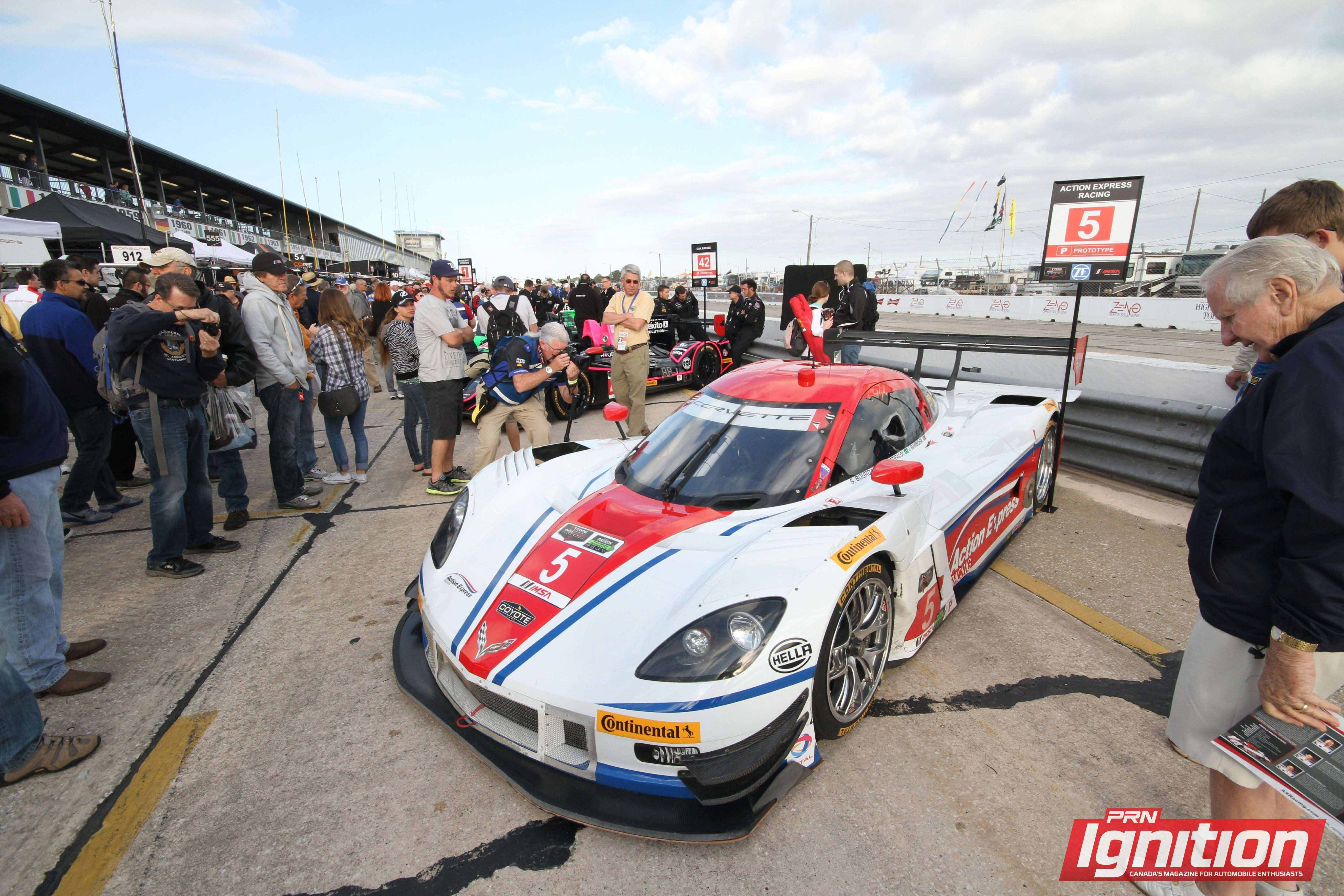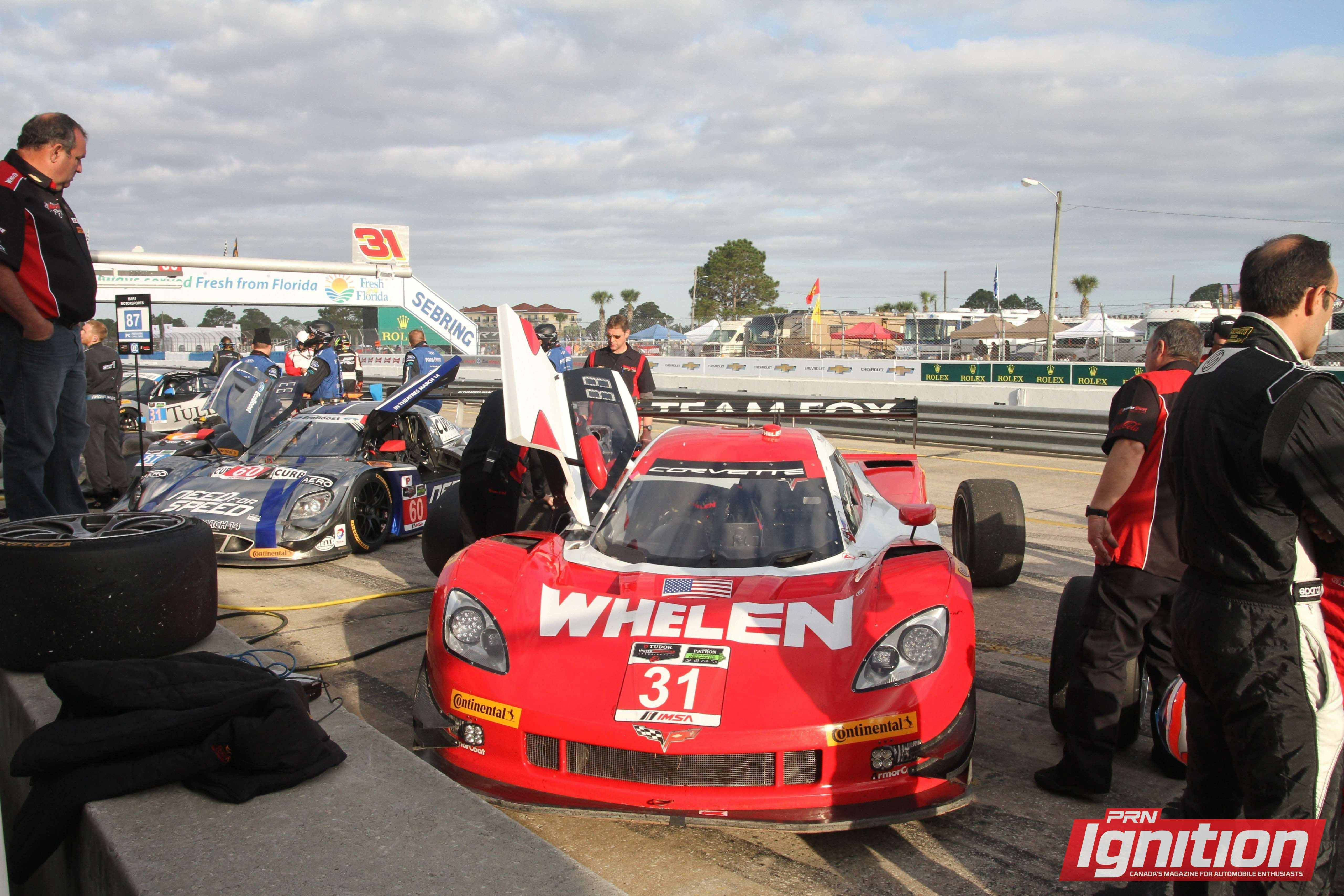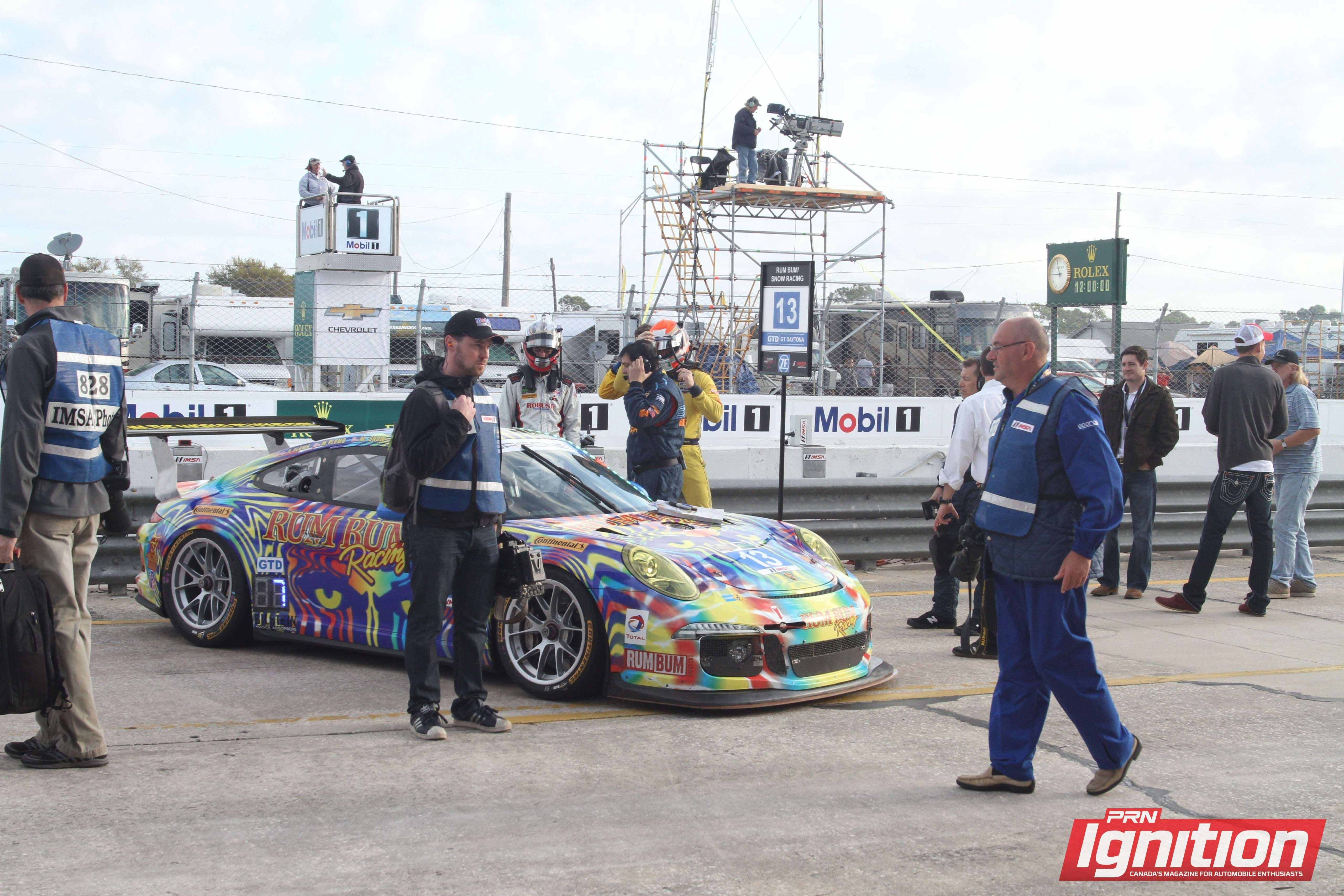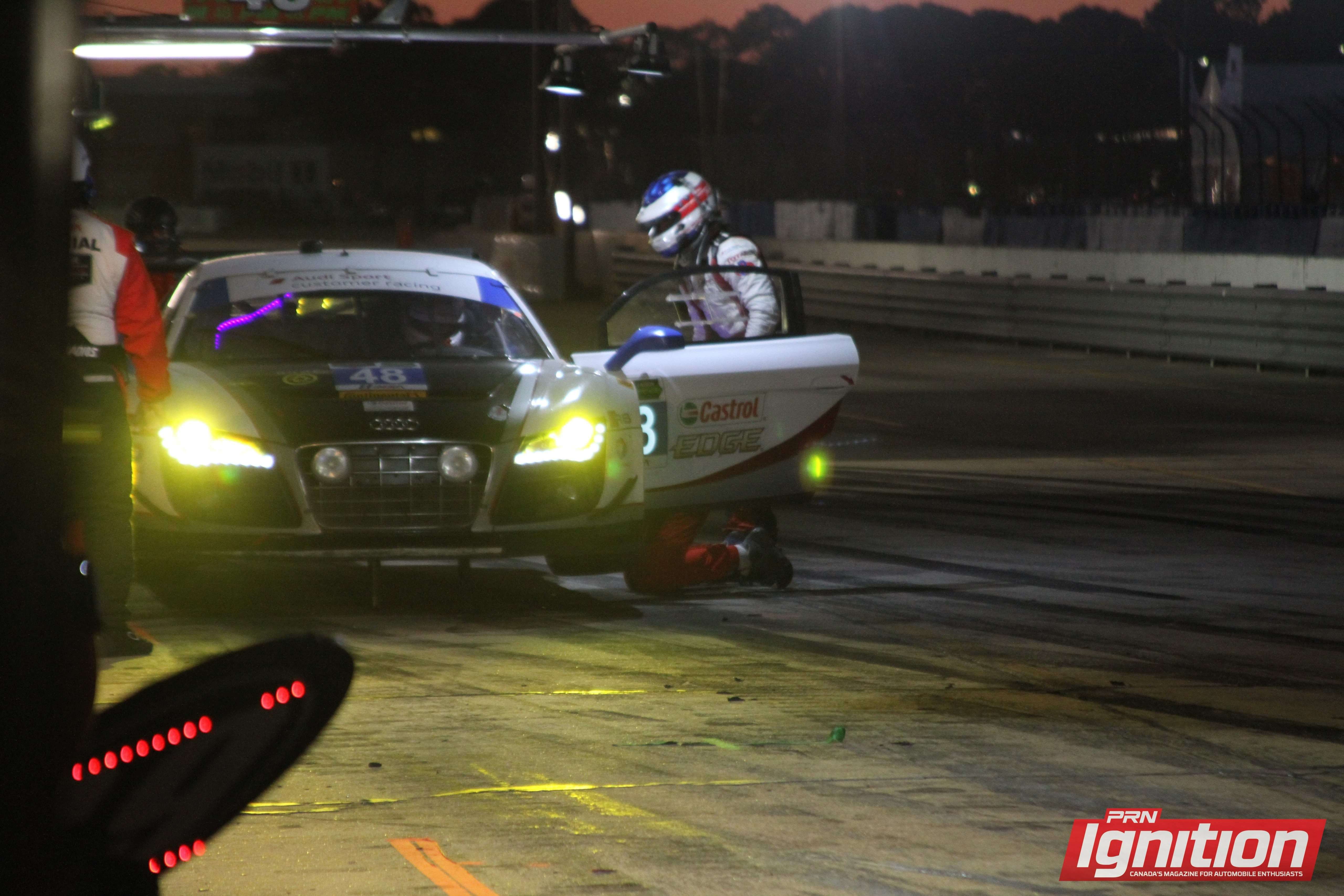
This year I had the privilege of attending the annual 12-hour race at Sebring on mid-Florida. This race has run here annually since 1952 and 2014 marks the first time the new TUSC (Tudor United SportsCar Championship) series ran here. The last – and only – time I was here before was nearly 20 years ago, so I had a lot of questions when I arrived on Friday.
 When it was announced that the two American-based sports car race series were going to have a shotgun wedding and become one, I was sceptical that the series managers could find a way to equalize the competition between the Le Mans-style “P2" prototypes and the so-called “Daytona Prototypes” which had been the mainstay of the former Rolex Grand-Am series. I looked at the lap times for each of the two types of cars at the American circuits where both had raced in the past two years – and I discovered that in each case the Le Mans P2 cars were about two seconds a lap faster than their Daytona Prototype counterparts. When it came to the GT cars, it was the same story, the Le Mans-Spec GTs having a similar advantage over the Daytona-spec GTs – but in this case it didn’t matter because TUSC had chosen to run these GT cars in separate classes making parity a non-issue.
When it was announced that the two American-based sports car race series were going to have a shotgun wedding and become one, I was sceptical that the series managers could find a way to equalize the competition between the Le Mans-style “P2" prototypes and the so-called “Daytona Prototypes” which had been the mainstay of the former Rolex Grand-Am series. I looked at the lap times for each of the two types of cars at the American circuits where both had raced in the past two years – and I discovered that in each case the Le Mans P2 cars were about two seconds a lap faster than their Daytona Prototype counterparts. When it came to the GT cars, it was the same story, the Le Mans-Spec GTs having a similar advantage over the Daytona-spec GTs – but in this case it didn’t matter because TUSC had chosen to run these GT cars in separate classes making parity a non-issue.
We have already seen the prototype cars running against each other in the Daytona 24-hour race. There the consensus was that the DPs were actually a bit faster than the P2s and a DP won the race with DPs finishing first through fourth and the highest placed P2 in fifth, three laps down. But maybe the speedway configuration of Daytona favoured the DPs while the rough, tough airport circuit at Sebring might favour the P2s strengths.
In the end, we found out that the cars were pretty closely matched at Sebring. Going into the final hour, David Brabham had grabbed the lead in the Honda-powered P2 but the Ford-powered Ganassi DP pitted and put Marino Franchitti behind the wheel. This seemed like a bad choice when he spun a time or two dropping back. But then a caution came out and the Honda pitted, Ryan Dalziel took over the wheel but on the restart he was behind Franchitti – and Franchitti drove like a master the rest of way, taking the checker by a five second margin. As a Grand-Am DP proponent in recent years, Ganassi had never run a car here at Sebring.
 But perhaps most important was the apparent parity between the two types of cars: DP, P2, DP, P2, P2, DP, DP, DP, P2, P2– in all, nine cars finished on the lead lap. I thought I would never see the day.
But perhaps most important was the apparent parity between the two types of cars: DP, P2, DP, P2, P2, DP, DP, DP, P2, P2– in all, nine cars finished on the lead lap. I thought I would never see the day.
That late caution set up a 20-minute shootout in all four classes, making for an exciting and close finish. In GT-Le Mans Jorg Bergmeister (co-driving with Patrick Long and Michael Christensen) took the checker in the Porsche North America 911, 22 seconds ahead of the Bell/Bomarito/Wittmer Viper. Four GT-LMs finished on the same lap.
More controversial was the finish in the GT-Daytona class. The No. 44 Porsche 911 of Magnus Racing was given the win but Alex Job, owner of the No. 22 911 claimed that he had been robbed of the win. Race officials had assessed a stop-and-go plus 80 seconds penalty to the No. 22, allegedly for hitting another competitor’s car. Even after it was demonstrated that it was another car (the Bergmeister 911 which eventually won in GTLM) and the race director apologized to Job, he told him he could do nothing to correct the error. Job pointed out that he lost to the Magnus car by only seven seconds, he should have been declared the winner. AS I write this on Thursday, almost a week after the race, we still have not seen the “official” results of the race. IMSA race officials did amend the results of the Daytona 24-hour after the race had ended; perhaps we will see this injustice fixed eventually ...
 I was enjoying Audi’s hospitality at this event, so I took a particular interest in their fortunes. Of course, Audi now has a long history of dominance in the P1 class here and at Le Mans, but given that the TUSC has dropped the P1 category, there were no P1 Audis here. Instead there were five R8 LMS Audis in the GT-Daytona class, including two entered by the reputable Flying Lizard team. This is only the second year that Audi has entered the R8s in GTD and they still have a way to go to be truly competitive with the Porsches and some others in this class. This highest finishing Audi was the Flying Lizard No. 35 which finished fifth in class. Eight GTDs finished on the same lap as the class winner.
I was enjoying Audi’s hospitality at this event, so I took a particular interest in their fortunes. Of course, Audi now has a long history of dominance in the P1 class here and at Le Mans, but given that the TUSC has dropped the P1 category, there were no P1 Audis here. Instead there were five R8 LMS Audis in the GT-Daytona class, including two entered by the reputable Flying Lizard team. This is only the second year that Audi has entered the R8s in GTD and they still have a way to go to be truly competitive with the Porsches and some others in this class. This highest finishing Audi was the Flying Lizard No. 35 which finished fifth in class. Eight GTDs finished on the same lap as the class winner.






















